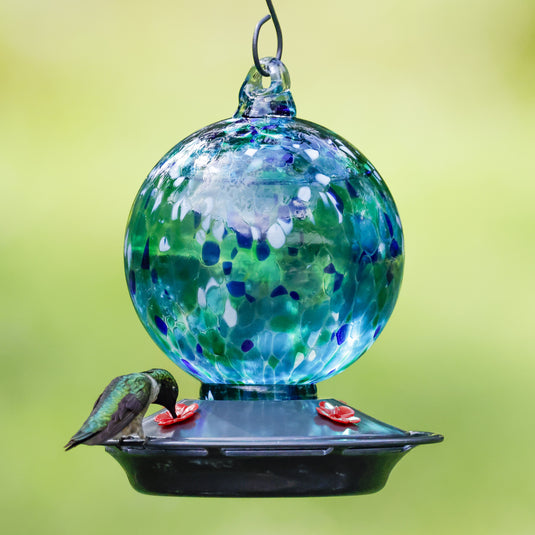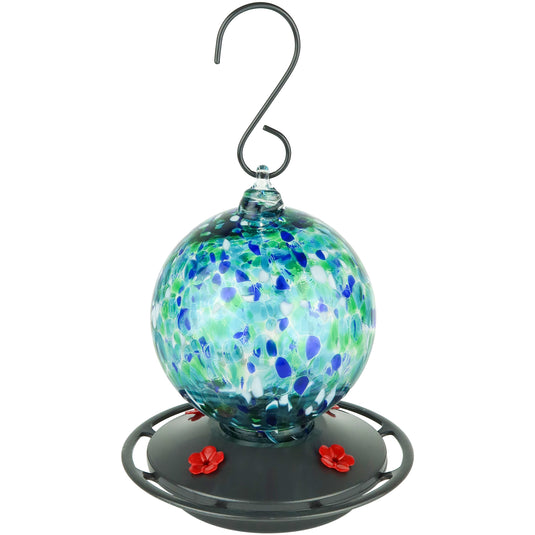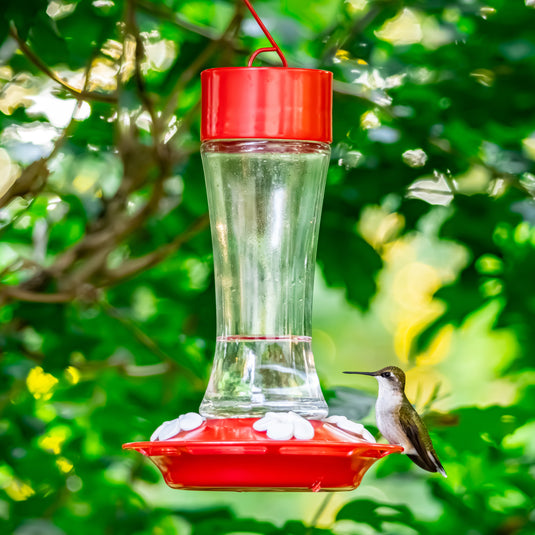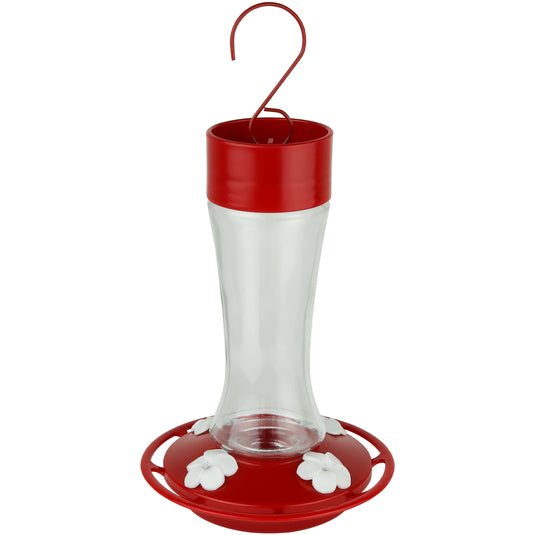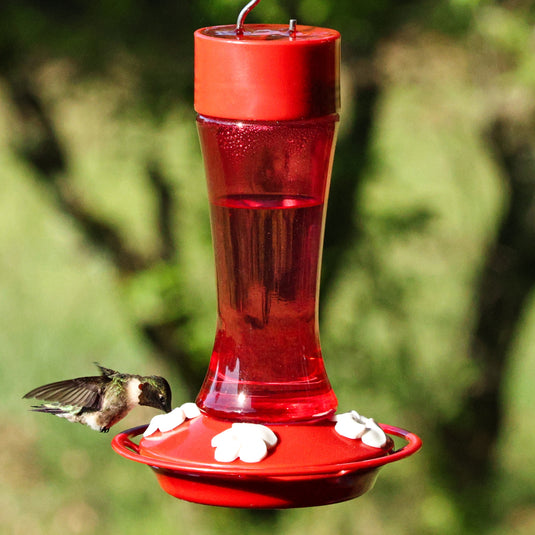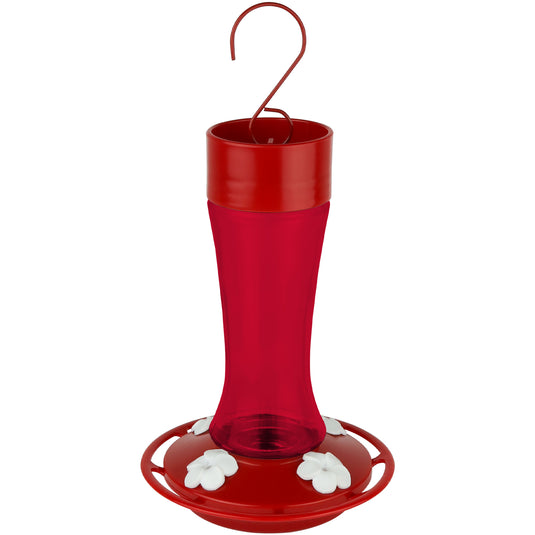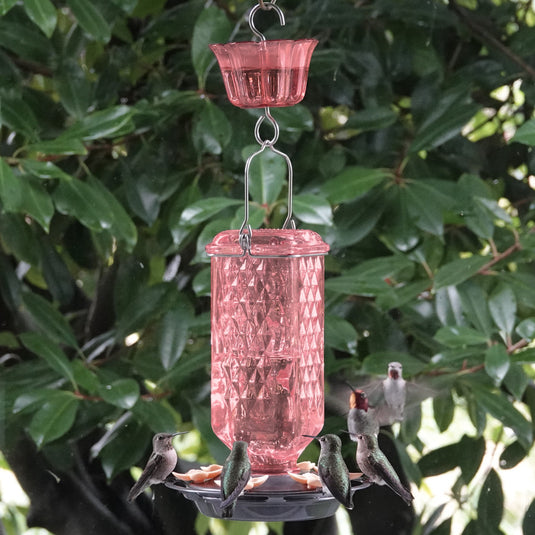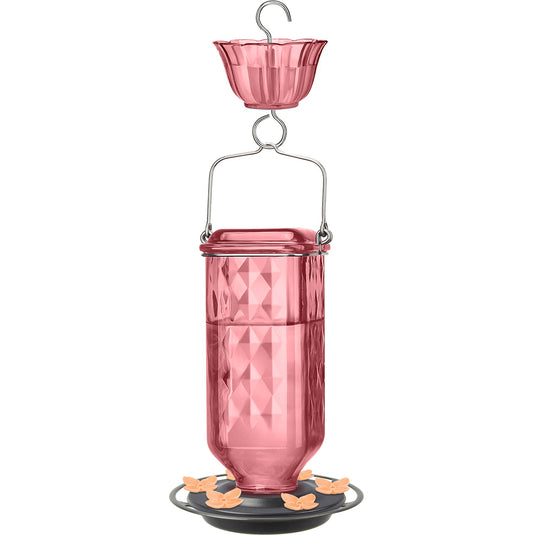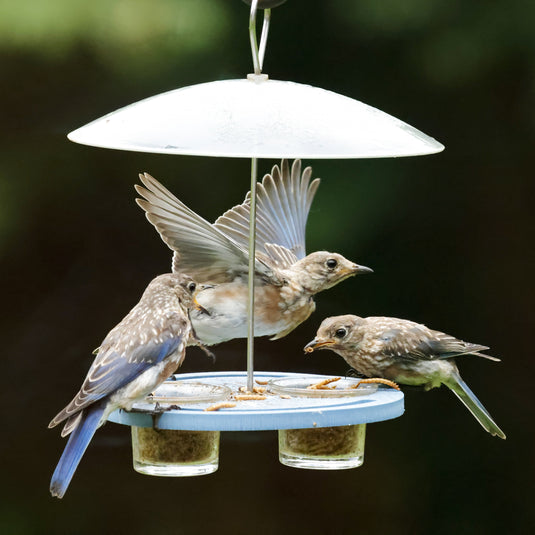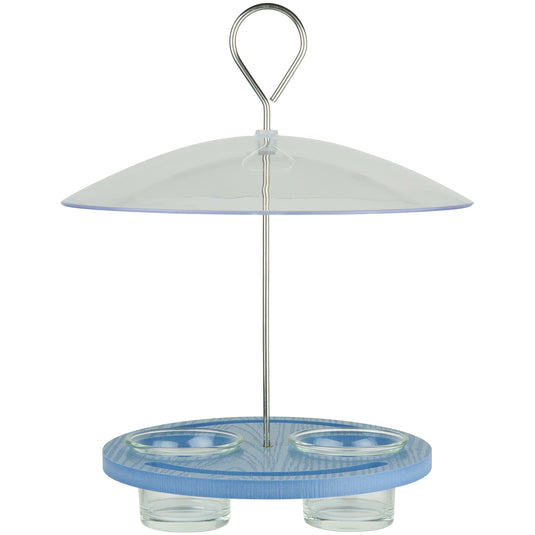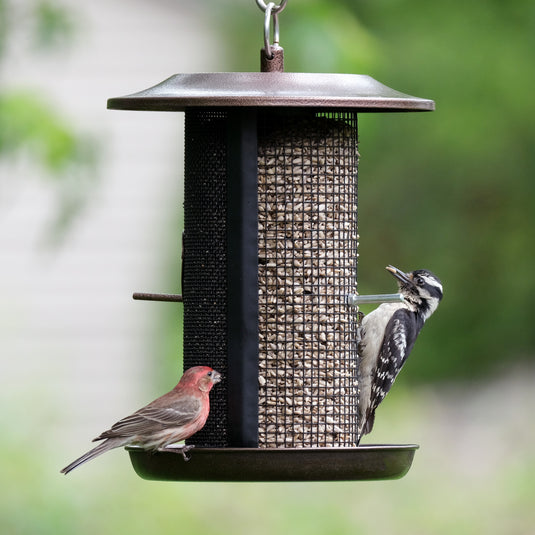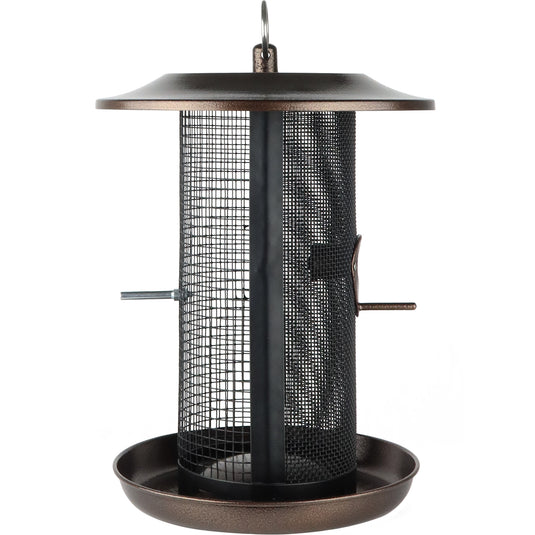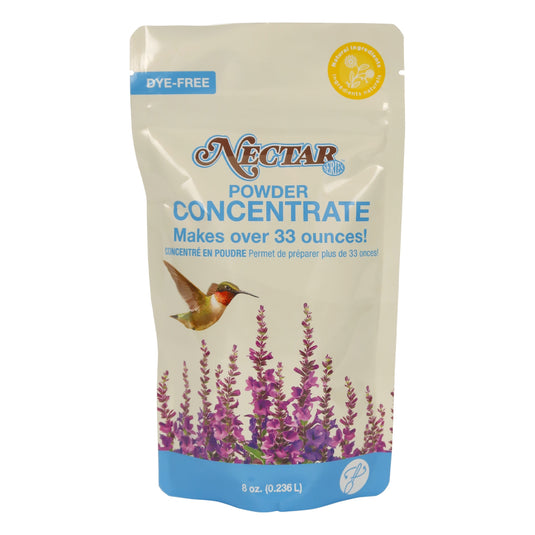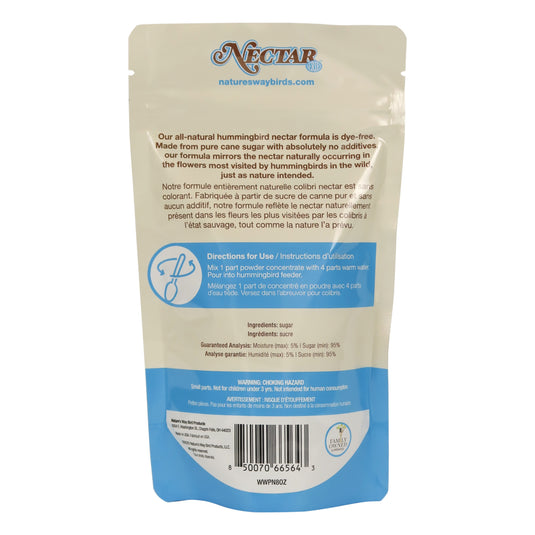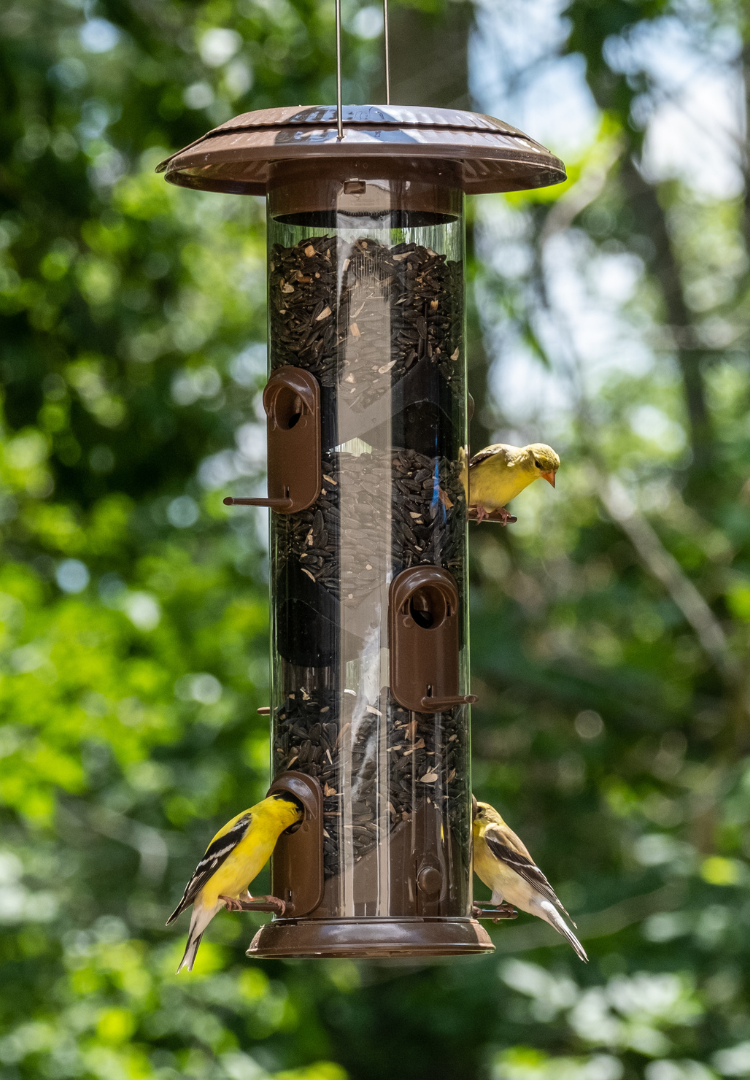Time for a bird party! Let's have some fun with our feathered friends and learn a few little-known facts about our backyard birds!
Skip to section
Blue Jays
Cardinals
Juncos
Nuthatches
Finches
Verdins
Chickadees
Hummingbirds
Woodpeckers
Orioles
Titmice
Catbirds
Wrens
Fun facts about Blue Jays
Blue Jays aren’t blue
Known for their striking feather pattern and boisterous personalities, Blue Jays are among some of the most recognized backyard birds in North America. But did you know that Blue Jays aren't actually blue? Many brightly colored birds, like the Northern Cardinal, produce a brightly colored pigment, but a Blue Jay's feathers don't contain any blue pigment at all! Instead, they contain a brown pigment called melanin. Due to a phenomenon called light scattering, our eyes only perceive the feathers as blue.

Feeder pictured: Stained Glass Hopper Feeder (Model# WWTF2-UV2)
Fun facts about Cardinals
There is a rare yellow cardinal
Eyes playing tricks on you? Surprisingly not! On very rare occasions, a genetic plumage variation called xanthochroism results in boldly colored yellow Northern Cardinals. It's estimated that there are two to three yellow Northern Cardinals spotted each year, making this golden bird one in a million!

A cardinal’s love is forever
Did you know that cardinals mate for life? During courtship, male Northern Cardinals express affection by feeding their females seeds in a method known as “beak to beak.” If use your imagination, you could say that the birds look like they are kissing!

Representing seven states
The Northern Cardinal is not only a popular mascot, but it also represents seven states in the USA! North Carolina, Virginia, West Virginia, Ohio, Indiana, Illinois, and Kentucky are proud to call the Northern Cardinal their state bird.
Fun facts about Juncos
The Snowbird
🎵 Gone away is the Bluebird 🎵 Here to stay is the…snowbird? 🎵
Did you know that the Dark-eyed Junco is nicknamed the snowbird? Staple winter residents, these birds are said to bring with them snowy weather from their wings.

Fun facts about Nuthatches
Nut-hack or Nuthatch?
How did the nuthatch get its name? Nuthatch originates from an old English word, "nut-hack," which describes the bird's unique feeding method. All nuthatch species wedge their food, like nuts, seeds, or insects, into the bark crevices of trees, and then use their strong bills to hammer or "hack" at the food until it is torn apart.
Fun facts about Finches
Bird igloos
Have you ever heard of a bird igloo? Goldfinches have been known to make small burrows underneath the snow to help keep them warm in the wintertime. How else do they stay warm? The Goldfinch is the only known finch species to molt twice a year. After their late summer molt, they develop an undercoat of soft feathers to help insulate them in cold temperatures.

You are what you eat
What makes the American Goldfinch appear so sunny yellow? It turns out with this species, you are what you eat! The bright yellow feathers on a breeding male Goldfinch is caused by the bird’s diet. Carotenoid pigments from the plants in its diet give the birds their colorful appearance.

Feeder pictured: Hanging Platform Feeder (Model# WWCF23)
A camouflage coat of feathers
Goldfinches are known for their bright yellow feathers, which are most vivid during the spring and summer months. During the fall molt, their bright yellow feathers are replaced with duller, more olive-colored feathers, which serve as better camouflage in the winter months.
Fun facts about Verdins
The desert dessert lover
The Verdin can be found in the southwestern most states of the USA as well as northern Mexico. While they're typically found foraging in trees and foliage for insects, these birds have are known for having a sweet tooth and often snack on fruits and even nectar from hummingbird feeders!

Feeder pictured: Mason Jar Hummingbird Feeder (Model# MJF1)
Fun facts about Chickadees
Chickadee-dee-dee
Can you crack the code? Chickadees communicate with intricate calls to convey information to their flock. Sometimes there is only one dee at the end of the chick-a-dee call and other times there are multiple. The more dee notes in a chickadee-dee-dee call, the higher the threat level!

Feeder pictured: Vintage Deluxe Easy Clean Tube Feeder (Model# WM4-S)
Fun facts about Hummingbirds
The only bird that can fly backwards
Bringing home the award for the most agile bird in the world, the hummingbird is the only bird that can fly backwards!

The 150,000-calorie diet
Out of every species in the animal kingdom, the Ruby-throated Hummingbird has the fastest metabolism of them all! Needing to eat every 10-15 minutes to retain energy, these tiny flyers consume the equivalent of 150,000 calories per day for their metabolic rate.

Feeder pictured: Illuminated Hummingbird Feeder (Model# GHF7)
Why do hummingbirds hum?
Is it because they don’t remember the words? You may have heard this one before, but all jokes aside, the humming we hear comes not from their voice, but the sound of the hummingbird’s wings as they flap. When birds flap their wings, most species will create lift and drag on the downstroke of the wingbeat, making a “whoosh” sound. At 40 beats per second, hummingbirds create lift and drag during both the downward and upward stroke of each wingbeat! The force and volume of these wingbeats makes the familiar “hum” noise that earned the hummingbird its name.
From 0 to 60 mph
Coming in hot from 0 to 60 mph, the hummingbird is one of the fastest birds on the planet! On average, hummingbirds can fly at speeds between 25 to 30 miles per hour, but some species have been known to fly much faster. For example, the Ruby-throated Hummingbird can fly up to 60 miles per hour during courtship dives. It's incredible to think that such a tiny bird can move so quickly!
A 22-hour nonstop one-way flight
I'd like a one-way nonstop flight to warmer weather, please! Did you know that Ruby-throated Hummingbirds undertake their journey across the Gulf of Mexico without stopping? They can fly up to 500 miles, taking 18-22 hours to complete this grueling flight! Farewell and safe travels, friends!
Fun facts about Woodpeckers
The most versatile woodpecker
The Northern Flicker might be the most versatile woodpecker there is! Not only do they forage for insects up in the trees, but flickers are known for frequently coming down to the ground to eat insects, even drilling their beak into the soil to reach the ants underground.
12,000 pecks a day
It's been estimated that a woodpecker may peck a total of 8,000-12,000 times per day! This might seem like an extraordinary number of pecks, but it's important to remember that woodpeckers have evolved to be able to withstand this type of repetitive behavior. Unlike other birds, a woodpecker's skull is built to absorb shock and minimize damage.
Fun facts about Orioles
One unlikely pollinator
The Baltimore Oriole is one unlikely pollinator. They help pollinate several tree species as they transfer pollen from tree to tree while eating nectar from their flowers. You can attract them to your backyard by offering them nectar, grape jelly, and orange halves!

Feeder pictured: All-In-One Oriole Buffet (Model# OFP1)
Fun facts about Titmice
One seed at a time
The Tufted Titmouse typically selects one seed from a feeder at a time. They shell it and hide the kernel within 130 feet of the feeder from which they obtained it.

Feeder pictured: Funnel Flip-Top Squirrel Resistant Feeder (Model# PSP2)
Fun facts about Catbirds
The snacker
The Gray Catbird eats mostly berries and insects, but these birds will also round out their diets with bird seed. They've even been known to snack on a bizarre assortment of items including donuts, cheese, boiled potato, and corn flakes - although we'd recommend something more nutritious!

Feeder pictured: Hanging Platform Feeder (Model# WWCF23)
Fun facts about Wrens
A truly amazing songbird
While these small birds may be fairly dull in appearance, it is the House Wren's beautiful song that enamors many bird enthusiasts. Males often sing 9-11 times per minute when attempting to attract a mate!






